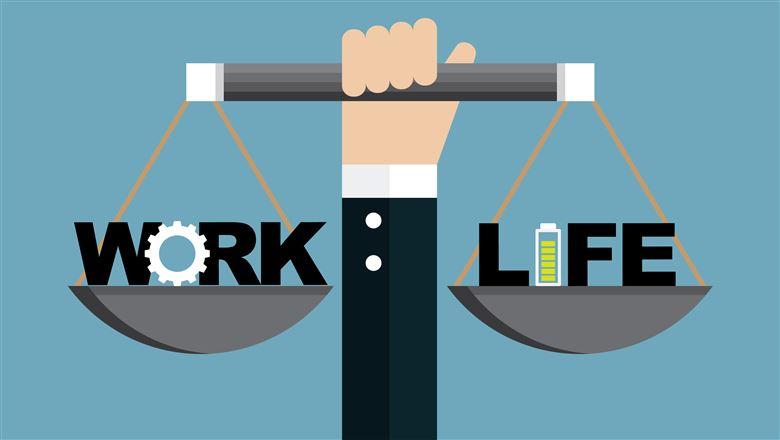Ever heard about the term WORK-LIFE BALANCE, the magical term every professional strives for. Though the term is highly popular in the corporate environment, the fact is that doesn’t abide under the corporate sector alone it’s for every human whose working under a potpourri of industries present worldwide.
But why is this word a popular one? Do every one of them who works get stressed? If the work you do is a part of your survival routine where does the bitterness seep through the happy cycle?
Let’s answer all of the above, along with why corporates enforce maintaining a proper work-life balance among their employees in this blog.
All of us do very well know what work-life balance means, well if not it’s just the sanity everyone tries to get by maintaining the golden equilibrium between professional and personal life. And now if you are wondering why this has become a hard task. We are equally curious to answer,
From our 16+ years of experience, we have categorized extreme workaholics into five categories,
- The perfecto-perfectionist: The people who belong to this category never get satisfied with their own creations. They are more likely to have lower productivity, poor health, difficult interpersonal connections, and low self-esteem. Well with all of this they eventually end up inside the depressed never-ending loop of corrections.
- They never say No’s: Responding yes with a big smile to others can have a strong influence on your career, reputation, and professional success – but saying no – notably when it’s difficult is one of the most important actions you can take for your individual growth. When you feel baffled by the thoughts of making others happy or making yourself happy, remember that saying no is simply an alternative to saying yes to what you wish to commit yourself to.
- The No priority-Prioritizers: Priority is always recognized as two sides of the same coin, and in the end, both incorrect prioritization and no prioritization lead to the same conclusion, failure. Using ‘The Hierarchy of Purpose’ in every individual helps them recognize that it’s very natural to alter priorities midway through a journey, and this can cause little harm provided he/she is committed to moving towards the objective. Priorities shift and, if managed well, have the power to significantly transform your life.
- P&P world swappers: It’s human nature to yearn for the one he/she misses, but switching your professional environment with personal thoughts, or vice versa, is bound to decrease your performance in both circumstances. You lag here genuinely because you aren’t ready to show your full talent at a moment when you must. Such P&P swappers need to thrive for one with stability at a time.
- Monotonous equals productivity believers: If you’re hoping to believe monotonously being held up is going to increase your productivity, well the answer is a huge NO. There isn’t harm in working back to back until or unless you feel comfortable without sensing your self-exploitation and loss of your personal time. But if it costs all of your personal and self-improvement space then the clock is stricken for you to pause, analyze and manage the routine.
Initiatives taken by corporates to maintain their employee’s work-life balance:
When individuals feel inspired, motivated, and encouraged at work, they accomplish more work – and that work is significantly less stressful for your employee’s general health and well-being. Corporates of the modern era have clearly started to understand the ill effect caused due to rising employee burnout. Here are some ways employers are attempting to enhance work-life balance:
-
-
-
- Employee hours should be restricted
- Allow for over time flexibility of working hours
- Provide remote working facilities
- Hold daily stand-up meetings
- Encourage vacation time
- Engage employees in physical activities
- Setting up an employee assistance cell
- Don’t try to fix something that isn’t broken
- Establishing priorities at the organizational level
- Trust your employees
- Conduct employee mental wellness assessments
- Take up regular employee well-being surveys
-
-
Self-examining your burnout symptoms:
If you’ve ever felt the following symptoms, you have to take time to analyze and remotivate yourself before deep-diving into the loop;
- You have the impression that you have little or no influence over your work.
- Failure to recognize or reward outstanding effort
- Uncertain or excessively demanding job expectations
- doing repetitive or unchallenging work
- Working in a chaotic or high-pressure environment lifestyle factor that contributes to burnout
- Working too long hours leaves little time for socializing or resting
- Inadequate intimate, supporting relationships
- Taking on too many duties without receiving adequate assistance from others
- Sleeping insufficiently
- Perfectionism is a personality trait in which nothing is ever good enough.
- Pessimistic attitude toward yourself and the world
Whether you identify the warning symptoms of oncoming burnout or you’ve already reached your limit, pushing through the weariness and continuing as you have will only bring more mental and physical harm. Now is the moment to take a breath and alter the course by learning how to help yourself overcome burnout and feel healthy and cheerful again.
The profession might always take precedence over all other aspects of our existence. An employee’s ambition to achieve professionally might cause them to put their personal well-being aside. Hence creating a healthy work-life balance or work-life integration, on the other hand, is a vital solution not only for employees’ physical, emotional, and mental well-being but also for their careers.


